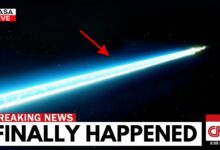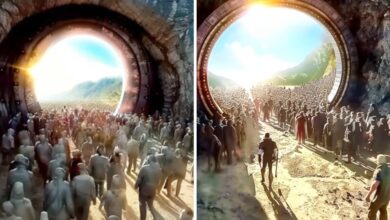What’s inside this crater in Madagascar?

Madagascar, an island nation off the southeastern coast of Africa, stands out for its extraordinary biodiversity. Nearly all of its flora and fauna are endemic, meaning they are found nowhere else on Earth. Among its many fascinating features is a peculiar and massive dark circle visible from space, spanning over thirteen kilometers in diameter. This circle, seen from above, is actually a large volcanic mountain. The unique shape of the mountain is so pronounced that it has even influenced local roadways, which are diverted around it.
At the heart of this mountain is a village situated in the crater, which is about eight kilometers from the closest town listed on Google Maps. The village is in an extremely remote area of Madagascar, far from major population centers. This remoteness, combined with the village’s seemingly ancient origins, raised an intriguing question: Why did people choose to settle in such a secluded location?
Initial attempts to gather information about this village using the internet proved challenging. Geotags and location references on platforms like Twitter and Instagram often led to unrelated or fictional content, including numerous posts about the popular Japanese manga and anime series “Attack on Titan.” Real-world references, such as local businesses or landmarks, were either scarce or not particularly helpful. After extensive online searches yielded little information, we decided to enlist the help of experts with knowledge about Madagascar’s geography and agriculture.

Madagascar, with a population of approximately 29 million people, is a country where over 60 percent of the population lives in rural areas similar to the one we were investigating. The closest significant urban center to the mountain is Tsiroanomandidy, which is eighteen kilometers away and has a population of over 44,000. Faced with the limitations of remote research, we considered sending a local team to the mountain.
We reached out to Lalie, who runs a production company in Madagascar’s capital, Antananarivo. Lalie agreed to undertake the journey, assembling a team to navigate the mountain and establish contact with the village. They planned the trip for January, during Madagascar’s hot rainy season. Despite their preparations, a massive storm thwarted their initial attempt, forcing them to turn back.
In their subsequent research, Lalie’s team discovered that the mountain, named the Ambohiby Massif, is an ancient geological formation dating back 90 million years. It is a remnant of a volcanic hotspot that contributed to the breakup of the supercontinent Gondwana, which separated Madagascar from India. This volcanic activity left behind a unique geological structure known as an alkaline ring complex, which has been studied in various locations around the world.
Further investigation revealed that the villagers had migrated from Manandriana, a district in the central highlands of Madagascar, over 380 kilometers away. They settled in the Ambohiby Massif primarily for its fertile soil and abundant water resources, which are crucial for agriculture. The village, named Anosibe Ambohiby, benefits from the mountain’s high elevation, which provides ample moisture for crops and livestock.
The journey to the village was arduous, but Lalie’s team eventually reached the crater and observed the village up close. They found a community thriving on the fertile land, with extensive fields of lemon and orange trees cultivated as cash crops. However, the remoteness of the area presents significant challenges, including difficulties in transportation and access to essential services.
This exploration highlights the broader issue of infrastructure development in Madagascar, where many rural areas lack adequate road networks and remain disconnected from essential services. The story of Anosibe Ambohiby underscores the importance of firsthand exploration and local knowledge in understanding and documenting remote locations that might otherwise remain hidden from digital and global view.








